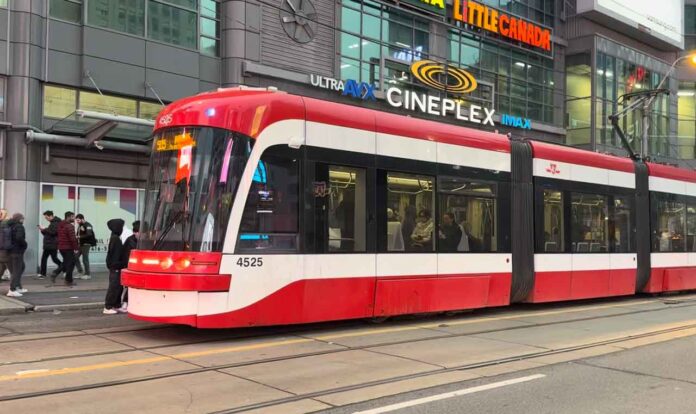Shopping
How Ontario’s LCBO makes money for the government | CBC News

The LCBO brings in about $2.5 billion for the Ontario government each year. Exactly how it earns that money is not always transparent to the public.
LCBO retail outlets — the 680 stores currently shut by strike — account for nearly 80 per cent of the Crown corporation’s gross revenue, according to its most recent annual report.
The rest comes primarily from LCBO’s role as a distributor to bars, restaurants and supermarkets.
What’s unclear is how Premier Doug Ford’s government’s looming plan to allow all 8,000-plus convenience stores and grocery stores in the province to sell beer, wine, and ready-to-drink cocktails will affect the LCBO’s bottom line.
Ford insists that the reforms will not hurt provincial coffers. However, industry sources and an LCBO internal document obtained by CBC News suggest the changes will take hundreds of millions of dollars away from the public purse each year.
What follows is a breakdown of how the LCBO currently turns a profit, and how things are expected to change with the Ford government’s reforms. All figures come from the LCBO’s annual report for the 2023 fiscal year, unless otherwise cited.
Premier Doug Ford says he will not back down on his plan of selling ready-to-drink cocktails at grocery and convenience stores in Ontario, despite the ongoing LCBO strike. The union representing more than 9,000 workers argued the provincial liquor store should have the exclusive right to sell pre-mixed drinks. CBC’s Chris Glover has more.
What the LCBO made last year
The LCBO’s gross revenues totalled $7.41 billion in 2023.
The vast bulk of that, $5.87 billion, came through the LCBO’s own retail outlets, including its online direct-to-consumer sales.
The other most significant contributors are:
- Licensed establishments (bars, restaurants, venues): $598 million.
- Grocery stores: $410 million.
- LCBO Convenience Outlets: $252 million.
- The Beer Store: $229 million.
What it made after costs
As for the LCBO’s net income (or profit), subtract the following figures from the $7.41 billion in total sales:
- $3.78 billion product costs (including the price the supplier charges, excise tax and freight).
- $1.19 billion expenses (including labour and administration costs).
That left the LCBO with a net income of $2.46 billion, all of which flowed to the provincial government.
How that breaks down by product
The LCBO provides figures breaking down how much of its sales come from each type of product: spirits (such as whisky and vodka), wine, beer (including cider) and ready-to-drink products, such as pre-mixed cocktails and hard seltzers.
The figures in the pie chart are gross sales. When it comes to margins (gross sales minus product costs, before operating expenses) certain product lines provide the LCBO a more lucrative return than others:
- Spirits: $1.61 billion.
- Wine: $1.17 billion.
- Beer: $568 million.
- Ready-to-drink: $309 million.

What retail stores netted the LCBO
The LCBO doesn’t make public any specifics breaking down how much of its net income comes from each sales channel.
But based on information in its annual report, the retail stores appeared to turn a profit of at least $1.9 billion, accounting for more than 75 per cent of the money that flowed to the province.
The LCBO says the cost of products accounted for 51 cents of every dollar in revenue, while expenses, including labour and administration costs, ate up 16 cents on the dollar, leaving 33 cents of income from each dollar in gross revenue.
Simple math: 33 per cent of the $5.87 billion in revenue from the retail stores works out to $1.94 billion in net income.
How it prices products
The LCBO makes its profit in a way that’s similar to just about any other retailer: by selling products at prices that are higher than what it pays its suppliers for those products.
What makes the LCBO different from just about every other retailer: the calculations it uses to set those prices are standardized and publicly available.

Here are two pricing examples from the LCBO’s website:
750-millilitre Canadian whisky:
- Supplied for: $7.13 (including freight)
- Federal excise: $3.99
- LCBO markup: $15.54
- Other LCBO levies: $0.38
- HST, deposit: $3.71
- Shelf price: $30.75
750-millilitre Ontario wine
- Supplied for: $5.71 (including freight)
- Federal excise: $0.53
- LCBO markup: $4.46
- Other LCBO levies: $1.51
- HST, deposit: $1.79
- Shelf price: $14.00
What about sales from grocery stores?
If that same bottle of Ontario wine is sold by a licensed grocery store, the LCBO still makes some of the markup.
However, the LCBO earns less off that bottle of wine sold in the grocery store than if it had been sold at an LCBO store. That’s because the LCBO provides that wine to the supermarket with what it calls a “wholesale discount,” 10 per cent off the pre-HST & deposit price.
In the above example, that amounts to $1.22 knocked off the LCBO’s take.
That means, on this $14 bottle of wine, the LCBO earns $5.97 if it’s sold at an LCBO store, versus $4.75 if it’s sold at a grocery store.
The government has said the 10 per cent wholesale discount will continue with the expansion to grocery and convenience stores at least until 2026. It also says it will consult with stakeholders on a new wholesaler pricing model for beyond that date.

What changes with convenience store sales
Since announcing the reforms, Ford has tried to persuade Ontarians that his plan to allow all convenience and grocery stores to sell alcohol gives the LCBO the opportunity to increase its revenue as exclusive wholesaler.
However, his government has yet to provide hard evidence of how that will be possible.
“When you’re the wholesaler, that’s where you make money,” Ford told a news conference Wednesday.
Currently, the LCBO is both retailer and wholesaler for products it sells from its own stores, and makes more money that way.
When the LCBO is just the wholesaler to another outlet, such as a grocery store, as the retailer, the system described above clearly shows that the LCBO’s take from any given product is less.
Currently, grocery stores are obligated to sell products at the same shelf price as the LCBO. That is set to change under the reforms. The government says grocery and convenience stores will be allowed to set their own prices, subject to Ontario’s minimum pricing rules for alcohol.
What about taxes?
There’s a perception the government makes most of its alcohol-related revenue from taxes, but that’s not actually true.
All told, Ontario brought in $600 million from beer, wine and spirits taxes in each of the last two years, according to the latest provincial budget. That’s far less than the $2.5 billion in revenue from the LCBO, which does not include booze tax.
Alcohol sales in Ontario – whether through the LCBO, the Beer Store, or winery retail stores – delivered $1.68 billion to the federal government in a mix of excise taxes, customs duties and HST.
The feds in turn hand the province’s portion of the HST over to Ontario.










